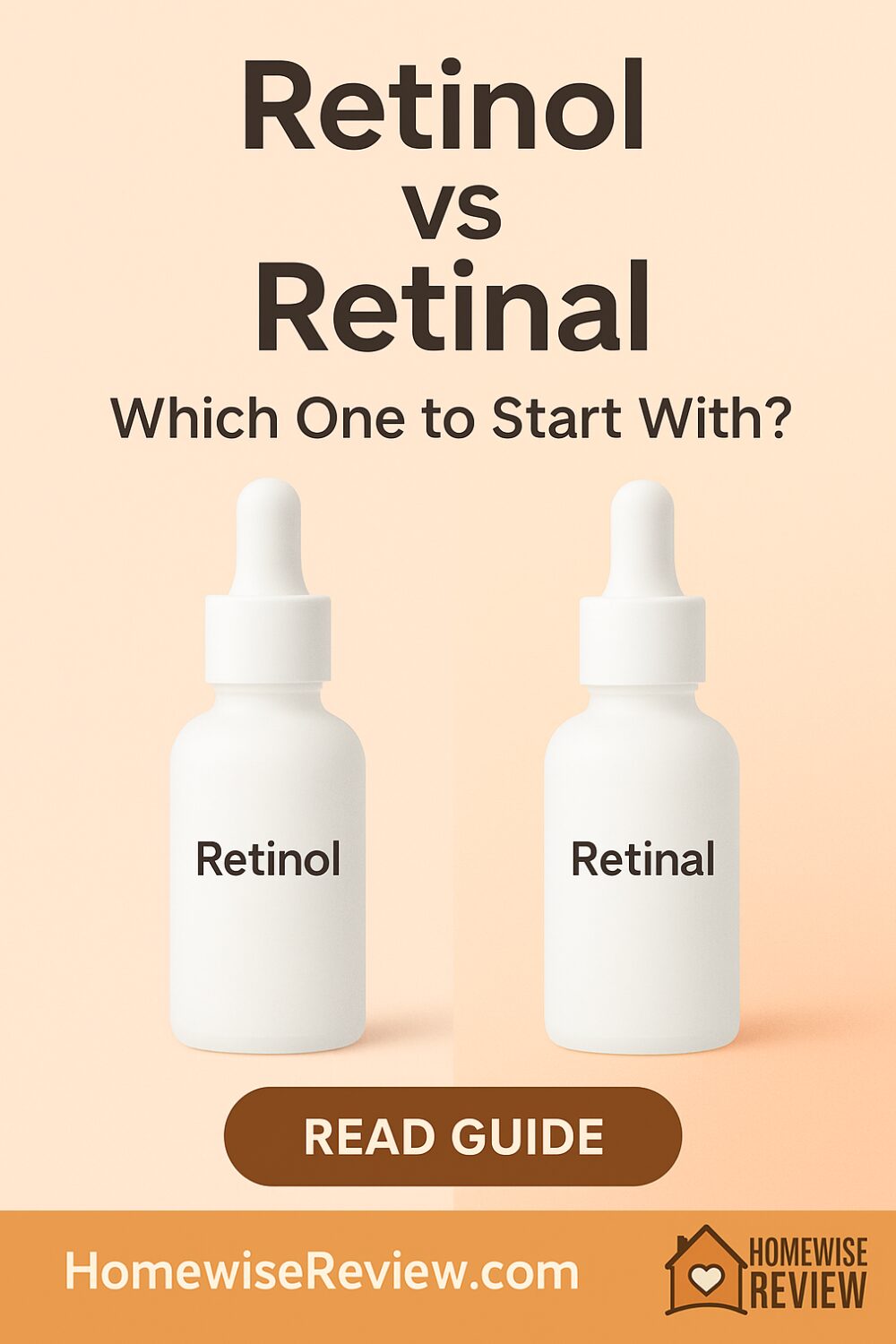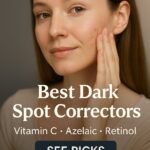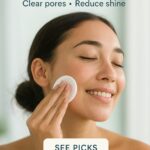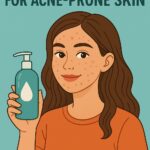
Most of us reach for “retinol” when we want smoother texture, fewer fine lines, and faded dark spots. Lately you’ve probably seen retinal (a.k.a. retinaldehyde) pop up as the new “stronger but still gentle” option. Both are forms of vitamin A that convert in the skin to retinoic acid, the active form your cells actually use. The key difference is how many steps they need to get there—plus how fast they work and how spicy they feel on sensitive skin.
This guide breaks down retinol vs retinal in plain English, then gives you simple starter routines, who each is best for, and what to expect over the first 12 weeks.
The quick answer
- Retinol = classic, widely available, budget-friendly, 2-step conversion (Retinol → Retinal → Retinoic Acid).
- Pros: great results with patience, easier to find at every price, many gentle formulas.
- Cons: slower onset than retinal; may still cause dryness/flaking when you first start.
- Retinal (retinaldehyde) = newer, typically pricier, 1-step conversion (Retinal → Retinoic Acid).
- Pros: tends to work faster on texture and tone; strong anti-aging data; often paired with soothing ingredients.
- Cons: can tingle more than beginner retinols; fewer options; must be well-packaged (light/air sensitive).
If you’re brand new or very sensitive → start with retinol.
If you’ve tolerated retinol and want more speed → try retinal.
Either way, sunscreen every morning is non-negotiable.
What each one does (and why speed differs)
Your skin can only use retinoic acid. Over-the-counter retinoids must convert:
- Retinol → Retinal → Retinoic Acid (two steps)
- Retinal → Retinoic Acid (one step)
Fewer steps generally means more potency per use and quicker visible change (think weeks 4–8 for retinal vs 8–12 for retinol). That’s why retinal has a reputation for being “stronger.” It also explains why some people feel a little more warmth or dryness early on.
Strength, irritation, and how to pick
Potency & timeline
- Retinol (0.1–0.3%): beginner strengths; smoother glow in 8–12 weeks with minimal dryness.
- Retinol (0.5–1%): intermediate; clearer texture and dark-spot fading by 6–10 weeks if used consistently.
- Retinal (0.05–0.1%): often equals a mid/high retinol in effect with fewer weeks to see change.
Irritation profile
- Retinal may feel spicier week 1–3, then settles.
- Encapsulated or time-release retinols tend to be the gentlest.
Texture & packaging
- Look for airless pumps and opaque tubes.
- Gels suit oilier skin; creams suit normal/dry; serums split the difference.
Who should start with which?
- Very sensitive, rosacea-prone, or on a lot of actives already → Retinol (low strength, slow build).
- Post-acne marks + early fine lines, normal to oily → Retinal (0.05%) three nights a week, then increase.
- Texture, pores, and uneven tone on combo skin → Either works; pick based on tolerance and budget.
- Neck/chest → Retinol first; those areas are more reactive.
Important: Skip retinoids if pregnant or nursing. If you’re on prescription acne meds, ask your derm before layering.
Starter routines (12-week plan)
Option A — Retinol beginner (sensitive-friendly)
- Weeks 1–2: Cleanse → moisturize → retinol 0.2–0.3% twice a week → moisturize again (“sandwich” method).
- Weeks 3–4: Increase to 3 nights/week if comfortable.
- Weeks 5–12: Move to every other night. Hold here for a month before jumping to higher strength.
Option B — Retinal fast-track (if you’ve used retinol before)
- Weeks 1–2: Cleanse → hydrating serum/cream → retinal 0.05% every other night.
- Weeks 3–4: Increase to 5 nights/week.
- Weeks 5–12: If well-tolerated, stay or advance to 0.1% retinal.
AM (both): Vitamin C or niacinamide → moisturizer → broad-spectrum SPF 30+.
Do not introduce strong AHAs/BHAs on the same nights at first. Add them back after skin settles.
Product short list (easy, reliable picks)
We don’t claim hands-on testing; selections are based on owner feedback, ingredient lists, and brand transparency.
| Product | Type | Why it’s a good start | Best for |
|---|---|---|---|
| CeraVe Resurfacing Retinol Serum | Retinol (encapsulated) | Barrier-supporting ceramides + niacinamide; gentle glide | Beginners, PIH + texture |
| The Inkey List Retinol Serum | Retinol + Retistar® | Budget, slow-release; lightweight | Oily to combo, first timers |
| Avène Retrinal Intensive Multi-Corrective Cream | Retinaldehyde (retinal) | Well-tolerated 0.05% retinal with thermal spring water | Normal to dry/sensitive upgrading from retinol |
| Geek & Gorgeous A-Game 0.05 / 0.1 | Retinal | Opaque tube, no fragrance, two strengths | Retinal curious; step-up path |
Use what fits your budget and skin type; consistency beats chasing percentages.
Combining with other actives
- Niacinamide: perfect companion; reduces redness and helps barrier.
- Azelaic acid: alternate nights to target post-acne marks.
- AHAs/BHAs: re-introduce 1–2x weekly on non-retinoid nights once skin is happy.
- Benzoyl peroxide: can be drying; alternate nights or use mornings.
- Peptides, hyaluronic acid, ceramides: great anytime.
Troubleshooting
- Flaking or tightness → decrease frequency, add a bland moisturizer, try the “sandwich” method.
- Stinging → apply over a light lotion until tolerance builds; avoid other exfoliants for two weeks.
- No results at 8 weeks → check frequency first, then consider moving from retinol to retinal or stepping up strength.
- Purging vs breakout → tiny surface-level bumps in your usual zones within the first 2–4 weeks can be purge; deep, sore pimples outside your normal pattern usually mean irritation—slow down.
See also
If you want the gentlest on-ramp, our Best Retinol Creams for Beginners roundup highlights low-irritation picks that still deliver smoother texture. Pair your nighttime vitamin A with a calm daytime routine built around Best Niacinamide Serums to keep redness down and support the barrier while you acclimate.
Brightening your morning is the other half of the equation. Scan Best Vitamin C Serums for options that layer cleanly under makeup, then protect your progress with a non-greasy SPF from Best Face Sunscreen for Acne-Prone Skin—they work well even if you are not breakout-prone. Not sure how to stack ingredients without overdoing it? Keep The Ultimate Ingredient Decoder for Everyday Products handy and sanity-check your routine in 30 seconds.
FAQ
Which is stronger—retinol or retinal?
Per use, retinal tends to act faster because it’s one step closer to retinoic acid. That doesn’t mean everyone should start there—tolerance matters.
Can I use retinoids around my eyes?
Yes, but sparingly and not on the mobile lid. Start with the outer crow’s-feet area 1–2 nights a week and buffer with moisturizer.
How long until I see results?
Texture glow can show in 4–8 weeks with retinal, 8–12 weeks with retinol. Dark-spot fading and fine-line softening continue for 3–6 months.
What should I never mix with retinoids?
Nothing is “never,” but early on it’s smart to avoid strong acids the same night. Vitamin C is fine in the morning.
I have melasma—retinol or retinal?
Both can help, but melasma is sun- and heat-reactive. Focus on daily SPF, consider azelaic/niacinamide/tranexamic by day, and introduce retinoids slowly. Ask your derm if prescription options are warranted.
Affiliate disclosure: If you purchase through links on our site, we may earn a small commission at no extra cost to you.




